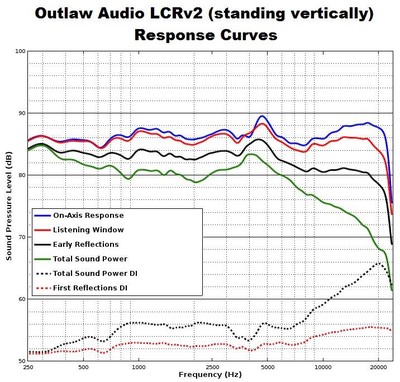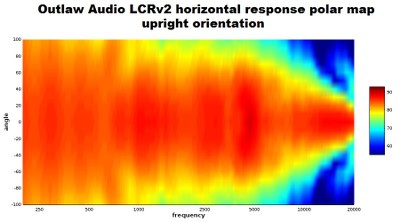One thing I will just elucidate here is what Matthew Poes means by 'DI' which I am guessing isn't an acronym that everyone knows. It stands for 'Directivity Index' and it is the measure of how all output emanating from the speaker compares to the sound coming from the area dead ahead of it. In Audioholics graphs, it is the difference between the 'Sound Power' curve and the 'Listening Window' curve. Floyd Toole talks about it a little bit in
this article. Basically what it signifies is how much the off-axis response resembles the on-axis response. It's generally a good idea to have a flat directivity index because if the off-axis response differs from the on-axis, the speaker is going to have an inaccurate sound character, and equalization can not do much to save the sound because it isn't all that predictable what the in-room response will look like afterward. Room Correction Equalizers such as Audyssey can't help a speaker with an erratic directivity index.
Much of what we hear in-room is from the off-axis response of the speaker because much of what we hear in room is from acoustic reflections of the speaker, not sound directly from the speaker to our ears. So a speaker with an off-axis sound character that does not resemble its on-axis sound character can not really be predictably adjusted because these two responses don't correlate well.
If a speaker has a high directivity index, that means that it is highly directional. A very narrow dispersion speaker would have this property, such as a very narrow horn-loaded speaker or a planar speaker. A speaker with low directivity has a wide dispersion pattern. Small speakers tend to have a wide dispersion. A true omnipolar speaker would be have a zero level directivity index all long the frequency response. Most speaker's directivity indexes vary along their frequency response. For example, this speaker:

The lower dotted black line is the directivity index that we are talking about here. You can see from its directivity index that it has a fairly wide dispersion up to 5 kHz or so, and then it begins to narrow. At 20 kHz, it is beaming pretty significantly, so you would have to be close to its direct axis in order to hear 20 kHz output at all from this speaker (btw, very few of us can still hear 20 kHz, so that is not a big deal). We can see this behavior more explicitly in the polar response graph:

We see a nice, smooth, even wide dispersion that begins to narrow above 5 kHz. To hear 20 kHz on this speaker, you would need to be within 20 degrees of its direct axis (assuming you could hear that high in the first place). Many conventional speakers act like this: low directivity in bass, where the speaker is almost omnipolar, wide dispersion in mids, and tightening dispersion in the highs. That isn't a perfect respones but it isn't a bad response either. Most people would quite like this speaker.